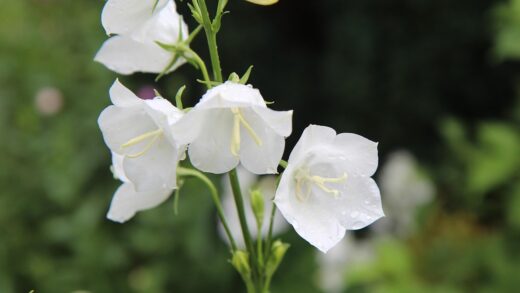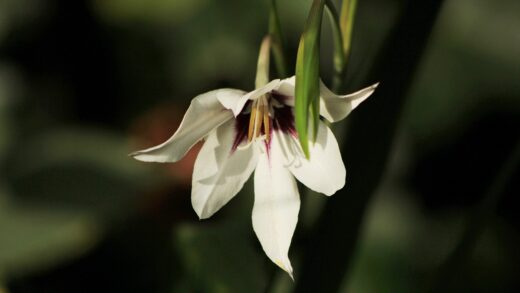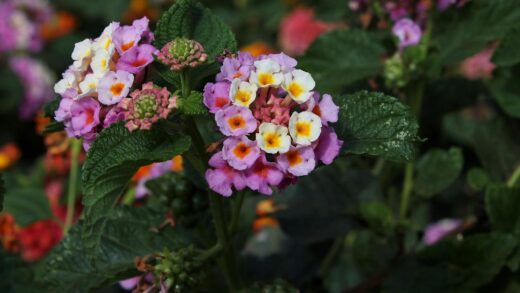Successfully overwintering peppermint is crucial for ensuring a vigorous and healthy return of the plant year after year. As a hardy herbaceous perennial, peppermint is well-adapted to survive cold temperatures by allowing its top growth to die back while the root system remains dormant underground. However, providing some protection and care before winter sets in, especially in regions with particularly harsh winters or for container-grown plants, can significantly improve its chances of survival and promote a robust start the following spring. Preparing your mint for its winter rest is a simple but important final step in the annual gardening cycle.
The primary strategy of the peppermint plant for winter survival is dormancy. As temperatures drop and daylight hours shorten in the autumn, the plant’s top growth will naturally begin to yellow, wither, and die back to the ground after the first hard frost. This is a completely normal process, and it does not mean the plant is dead. All of the plant’s energy has been stored in its extensive network of underground rhizomes, which will lie dormant beneath the soil, waiting for the warmth of spring to send up new shoots. Your role as a gardener is to protect this dormant root system from the most extreme winter conditions.
In most gardening zones where peppermint is hardy (typically zones 3-9), plants grown in the ground require minimal winter care. The soil itself provides a significant amount of insulation for the root system. However, in colder climates at the edge of its hardiness range, or in areas with little reliable snow cover, an extra layer of protection can make a significant difference. Snow is an excellent natural insulator, but in its absence, the roots can be vulnerable to deep freezes and repeated freeze-thaw cycles which can damage the root tissues.
For peppermint grown in containers, the situation is quite different. The soil in a pot is exposed to cold air from all sides, not just the top surface, meaning the root ball can freeze solid much more easily than it would in the ground. This makes container-grown plants far more vulnerable to winter damage. Therefore, gardeners with potted peppermint need to take specific steps to insulate the container and protect the roots from the extreme cold if they want the plant to survive the winter outdoors.
Preparing peppermint for winter outdoors
As autumn progresses, you can begin preparing your in-ground peppermint patch for its winter dormancy. The first step is to stop all fertilization by late summer. Applying fertilizer, especially those high in nitrogen, late in the season encourages tender new growth that will not have time to mature and harden off before the first frost. This weak growth is highly susceptible to cold damage and can be an entry point for disease, potentially harming the overall health of the dormant plant. Allowing the plant to naturally slow its growth is a critical part of the preparation process.
More articles on this topic
After the first hard frost has caused the top growth of the peppermint to die back, it is a good practice to cut the dead stems down to about an inch or two above the soil line. While some gardeners leave the dead foliage in place to trap snow, trimming it back creates a much tidier appearance and, more importantly, removes any potential overwintering sites for pests or fungal spores, such as mint rust. Be sure to clean up and dispose of all the cut material, especially if the plant showed any signs of disease during the growing season. Do not add diseased foliage to your compost.
The next and most important step for outdoor winter preparation is mulching. Once the ground has frozen or is close to freezing, apply a generous layer of organic mulch over the entire peppermint patch. A layer that is three to four inches deep is ideal. Good mulching materials include straw, shredded leaves, wood chips, or pine needles. This layer of mulch acts like a protective blanket, insulating the soil and the dormant rhizomes beneath it from the harshest winter temperatures.
The purpose of this winter mulch is not necessarily to keep the ground warm, but rather to keep it consistently cold and frozen. It helps to prevent the repeated freezing and thawing cycles that can occur during sunny winter days or mid-winter thaws. These cycles can heave the soil and damage the shallow root systems of the plants. By applying the mulch after the ground has frozen, you help ensure that it stays frozen until the true arrival of spring, protecting the roots from this damaging heaving action.
Overwintering container-grown peppermint
Peppermint grown in containers requires a more deliberate approach to winter protection due to the vulnerability of its root system. The soil in an above-ground pot can freeze much faster and more solidly than garden soil, which can kill the plant’s roots. Therefore, your primary goal is to insulate the pot and prevent the root ball from experiencing extreme temperature fluctuations. You have several effective strategies to choose from, depending on your climate and available resources.
More articles on this topic
One of the simplest methods is to move the entire container to a more protected location. An unheated garage, a shed, a cold frame, or a sheltered spot against a house wall (preferably on the north or east side to avoid winter sun) can provide enough protection from the harshest winds and temperatures. The plant will still go dormant in these locations, so it will not need light. You should reduce watering drastically, providing just a small amount of water every month or so, only enough to keep the soil from becoming bone dry.
If you must leave the pot outdoors in an exposed location, you will need to provide significant insulation. One technique is to group several pots together to create a larger thermal mass, reducing the surface area of each individual pot exposed to the cold. You can then wrap the entire group of pots with burlap or bubble wrap. Another effective method is to create a temporary mound of insulating material, such as shredded leaves or straw, completely burying the pot within the mound. This mimics the insulating effect of being planted in the ground.
Another excellent strategy is the “pot-in-pot” method. If you have an empty space in a garden bed, you can simply dig a hole large enough to sink the entire pot into the ground, up to its rim. The surrounding garden soil will provide excellent insulation for the roots throughout the winter. In the spring, after the last frost, you can easily lift the pot out of the ground. This method combines the containment benefits of a pot with the superior winter protection of an in-ground planting.
Bringing peppermint indoors for the winter
For gardeners who wish to enjoy fresh mint throughout the winter, bringing a portion of the plant indoors is an excellent option. This allows you to bypass the dormancy period and continue harvesting fresh leaves. However, it is not advisable to bring the entire large outdoor plant inside, as this can be cumbersome and may introduce pests into your home. A better approach is to prepare a new, smaller plant specifically for indoor growing before the first frost.
You can do this by taking a few healthy cuttings from your outdoor plant in late summer or early autumn. Root these cuttings in a glass of water or directly in a small pot filled with fresh potting soil. Alternatively, you can dig up a small section of the rhizome from your main plant, ensuring it has some new shoots, and pot it up. By starting with a fresh, clean plant, you significantly reduce the risk of bringing pests like spider mites or aphids into your home environment.
Once potted, the peppermint will need to be placed in the sunniest location you have available. A south-facing window that receives at least six hours of direct sunlight per day is ideal. Mint requires a lot of light, and without it, the indoor growth will be weak, leggy, and lacking in flavor. If you do not have a sufficiently sunny window, you may need to supplement with a grow light to provide the intensity and duration of light the plant needs to thrive.
Care for your indoor peppermint involves regular watering to keep the soil consistently moist, but be careful not to overwater, especially in the lower light conditions of winter. Check the soil moisture frequently and water when the top inch feels dry. You will also need to provide good air circulation to prevent fungal issues. Occasional harvesting by pinching off the top leaves will encourage the plant to grow bushier and provide you with a welcome taste of summer throughout the colder months.
Spring care after dormancy
As winter begins to recede and the first signs of spring appear, it is time to help your peppermint emerge from its dormant state. For plants that were overwintered outdoors in the garden, you should begin to gradually pull back the thick layer of winter mulch. The timing for this is important; wait until the threat of a hard freeze has passed, but do not leave the mulch on for too long, as it can slow the warming of the soil and inhibit the emergence of new shoots. Raking the mulch away allows sunlight to reach the soil and encourages the dormant rhizomes to sprout.
Once the new green shoots are clearly visible and are a few inches tall, you can provide them with their first feeding of the season. This is a great time to apply a top-dressing of rich compost or a balanced, all-purpose granular fertilizer around the patch. This will replenish the soil’s nutrient supply and provide the energy the plant needs to fuel its vigorous spring growth. Water the area well after applying any fertilizer to help it absorb into the root zone.
For container-grown plants that were stored in a shed or garage, you should begin to reintroduce them to the outdoors gradually. Start by moving the pot outside to a shady, sheltered spot for a few hours each day, slowly increasing its exposure to direct sunlight and outdoor conditions over the course of a week or two. This process, known as hardening off, prevents the tender new growth from getting shocked or sun-scorched. You can also resume a regular watering schedule as the plant begins to actively grow again.
Early spring is also the perfect time to divide your peppermint patch if it has become overgrown or if the center is showing signs of dying out. Digging up and dividing the plant every two to three years invigorates its growth and prevents it from becoming too dense, which improves air circulation and reduces the risk of disease. This is a great opportunity to repot container-grown mint with fresh soil or to expand your mint collection to new areas of the garden.


















